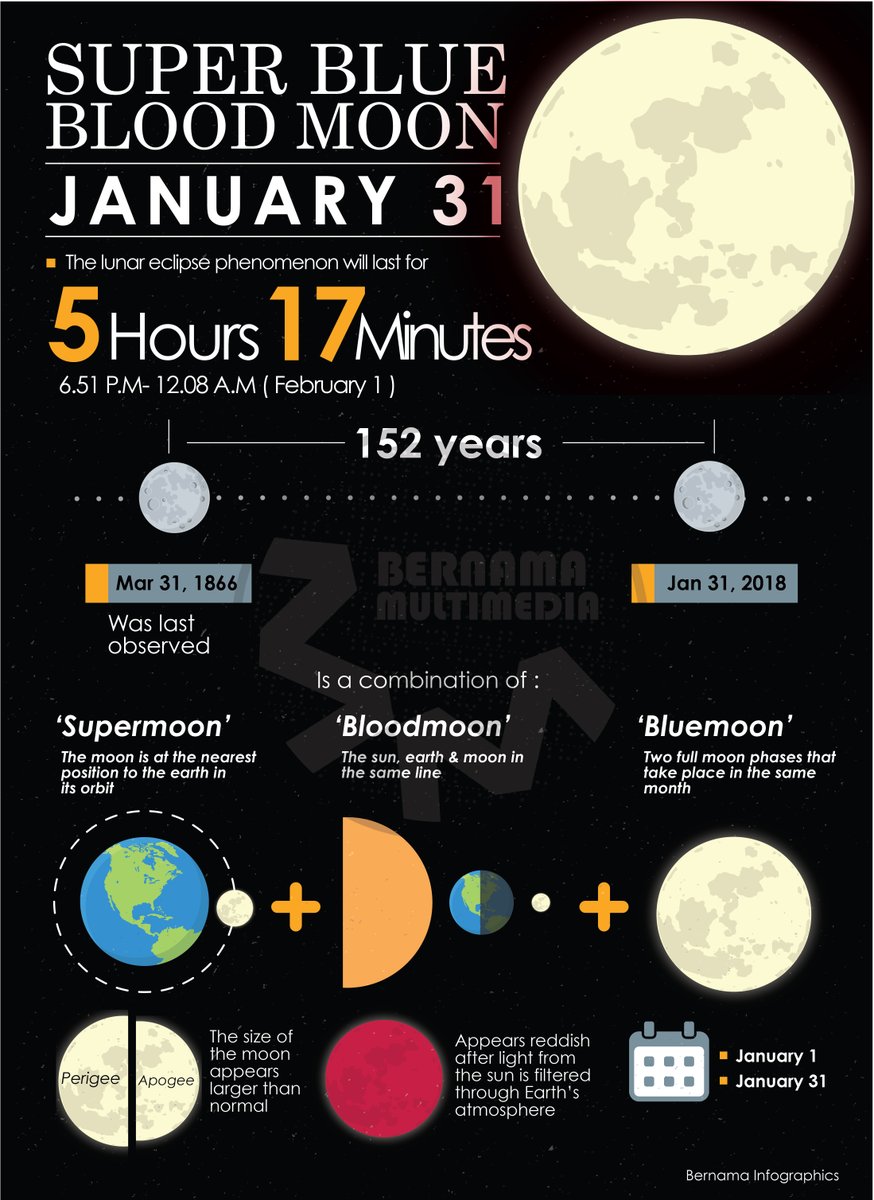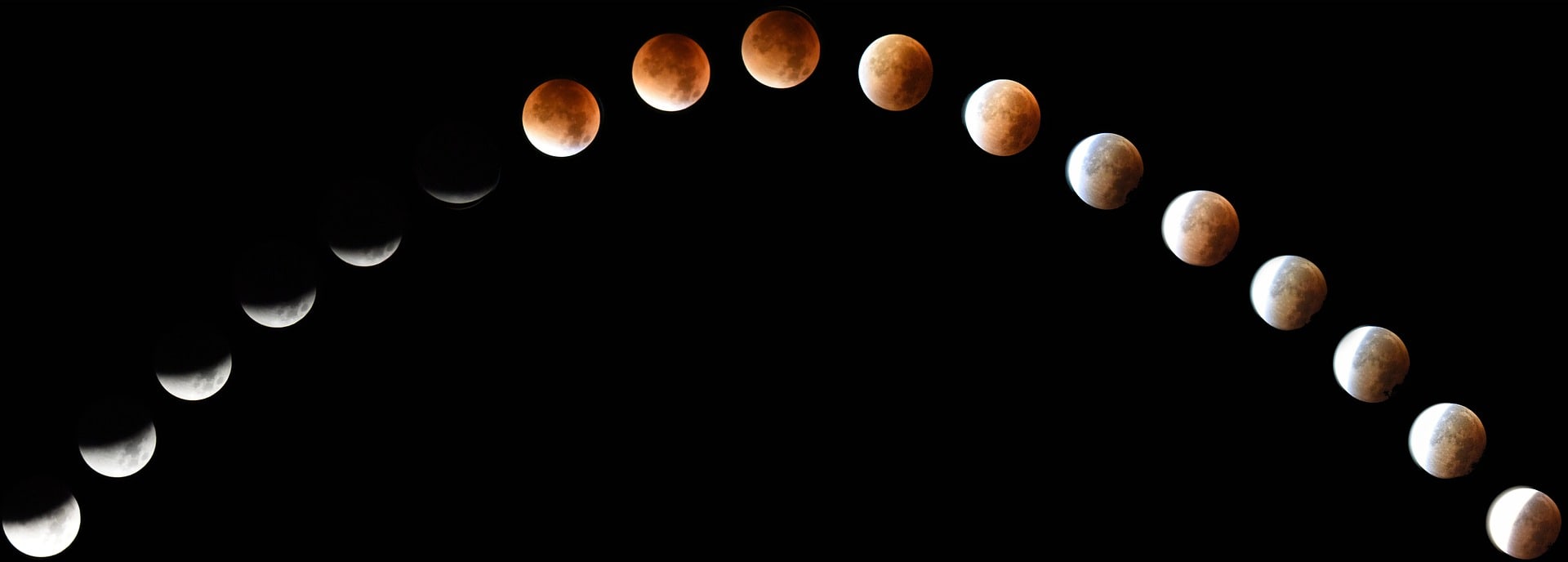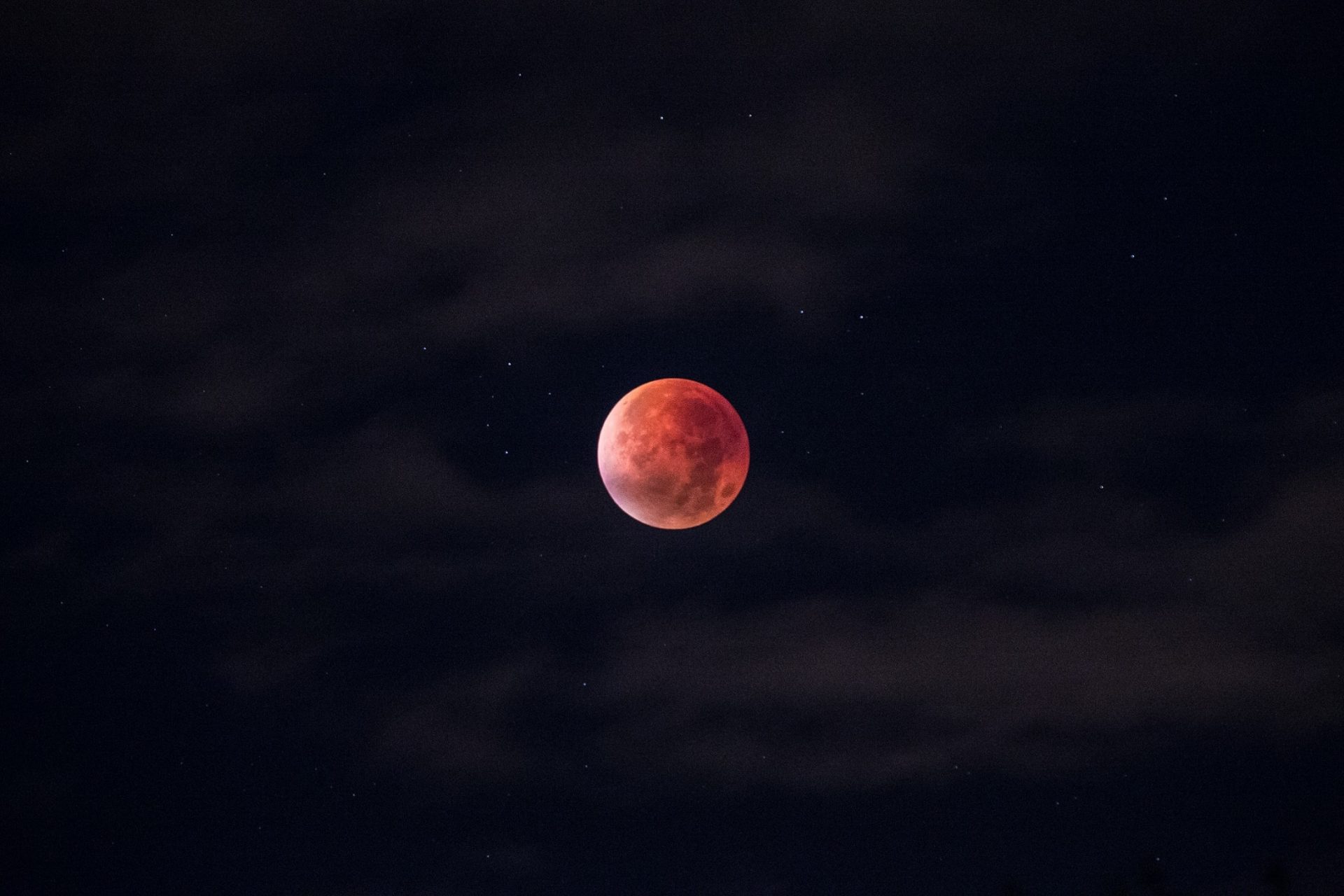This month was laden with astronomical events, with the “finale” happening this Wednesday, January 31 — the Super Blood Blue Moon. A combination of three lunar phenomena, it’s a rather spectacular occurrence as the last time this type of total lunar eclipse happened was 152 years ago.
Last observed on March 31, 1866, the phenomenon is a combination of the Supermoon, Bluemoon, and Bloodmoon phenomena. The Supermoon phenomenon is when a full moon is at the nearest position to Earth in its orbit, making it appeared larger than normal. The moon is dubbed as a Bluemoon when it is the second full moon in a calendar month.
According to a statement by the National Planetarium, the eclipse on Wednesday will begin at 7.48pm until 11.11pm, and the total lunar eclipse will begin at 8.51pm before reaching its maximum phase at 9.29pm and finally, ending at 10.07pm.
“Generally, the lunar eclipse is also known as Bloodmoon as the moon appears reddish after light from the sun is filtered through Earth’s atmosphere,” the statement read.

The National Space Agency (Angkasa) said in a statement that the total lunar eclipse phenomenon would be visible in eastern Europe, east Africa, Asia (including Malaysia), Australia, and North America.
“It (the total lunar eclipse) will last for 5 hours and 17 minutes, from 6.51pm to 12.08am on Feb 1. This means that the eclipse is taking place when the moon is rising in the east (except for Sabah and Sarawak which will begin after moon rises),” the statement read.
The moon’s colour would also change gradually during this time, turning from a pearly white colour to a reddish colour and finally, back to its original colour within the 5-hour period.
Viewing Points

Depending on the weather conditions and the clarity of the sky, ideal locations to observe this rare phenomenon are from coastal areas facing the sea on the east side, hilltop areas, highlands, on top of tall buildings, or anywhere with an unobstructed view of the sky on the east. You can also visit these places for a good look at the phenomenon:
- National Planetarium, Kuala Lumpur
- Teluk Kemang Observatory, Port Dickson, Negeri Sembilan
- Selangor Observatory, Sungai Lang, Parit Baru, Sungai Ayer Tawar, Selangor
- Al-Khawarizmi Observatory, Tanjung Bidara, Melaka
- Tok Jembal Beach, Terengganu (organised by the Kusza Observatory)
- Tun Mustapha Tower, Kota Kinabalu, Sabah (Sabah Stargazers Observatory)
- Kota Bharu Observatory, Kampung Kubang Rawa, Salor, Kelantan
The public are welcome to take part in the Super Blood Blue Moon observation programme from 7pm until midnight at the entrance of the National Planetarium. Several telescopes will be provided to observe the lunar eclipse, along with a briefing on the phenomenon as well as astro-photography activities.
The Langkawi National Observatory will also be open to public, from 7.30pm until midnight.
"ExpatGo welcomes and encourages comments, input, and divergent opinions. However, we kindly request that you use suitable language in your comments, and refrain from any sort of personal attack, hate speech, or disparaging rhetoric. Comments not in line with this are subject to removal from the site. "




















Antoine Castel Clara Szybowicz wanna try ?
Wanna try with a 🍺🍺🍺🍺
Sûre, when is it ?
Tonight
Nick Bajan Jasmine Ithisingkarn Vinoda Ganase tom!